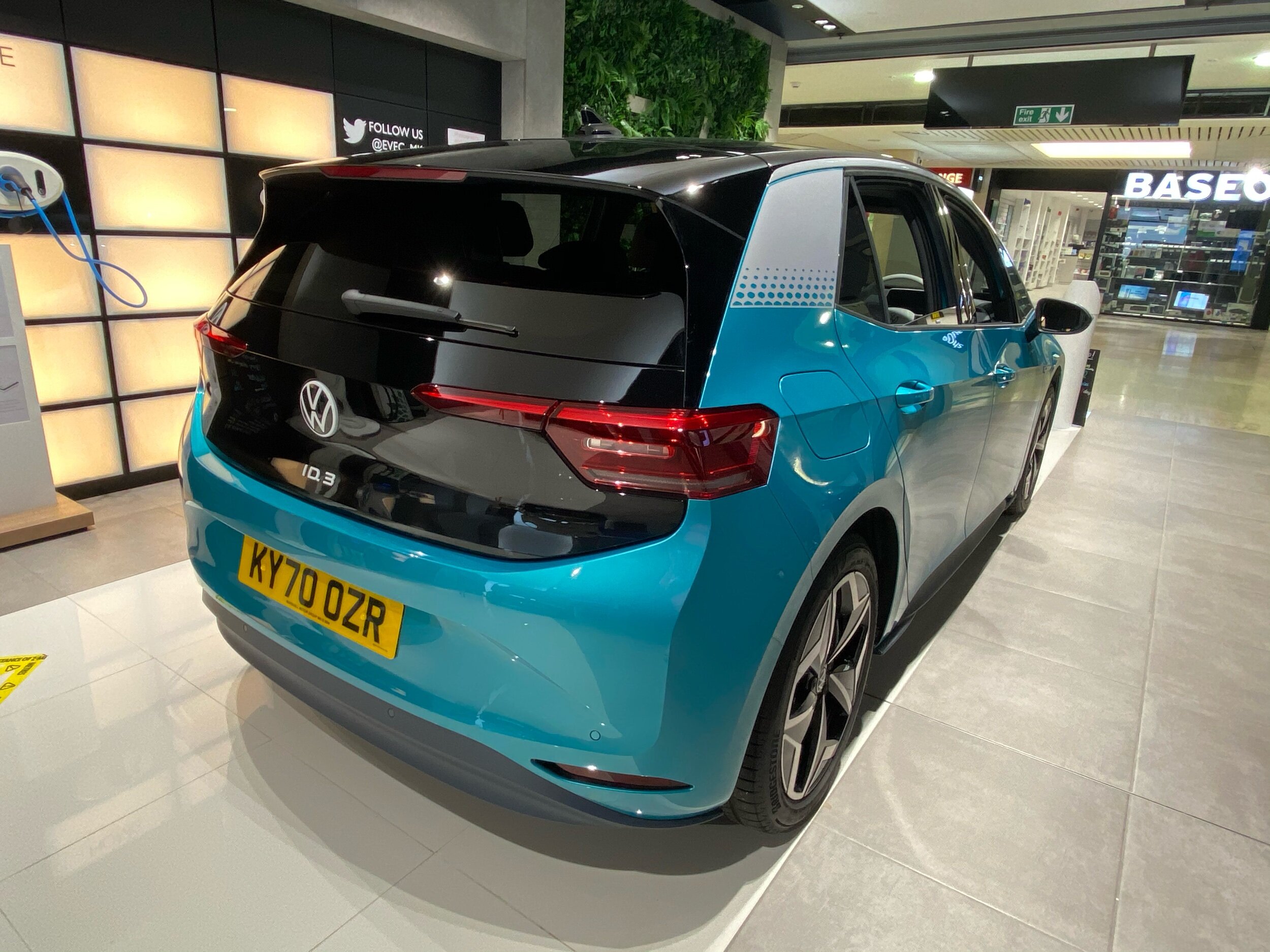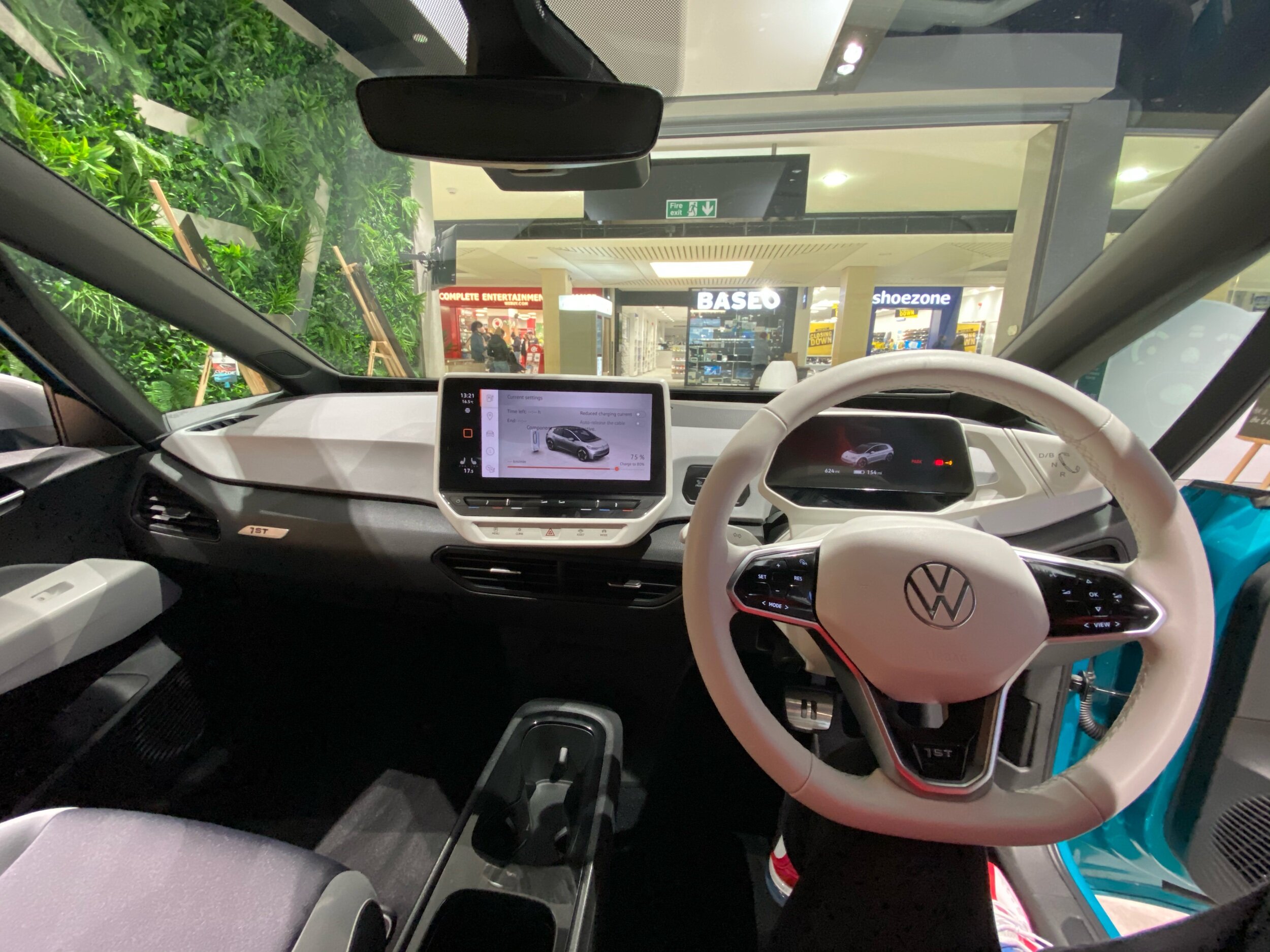Words by Marcus Boothby
Welcome to Volkswagen’s first attempt at a proper electric car, the ID.3. The ID.3 is Volkswagen’s first step into a mass market electric car, after their previous efforts, the e-Golf and e-Up! not exactly catching on due to high pricing and low range. The ID.3 is set to change this with a range starting at roughly 260 miles and a price of just under £30,000, after the UK government grant of £3,000.
The ID.3 is supposed to be a fresh start for VW, especially after the Dieselgate scandal, and the move to more ‘environmentally-friendly’ cars. The ID.3 also ushers in a third-era for VW, with the first two being the Beetle and Golf respectively. The ID.3 is the first car in VW’s ID portfolio, with the ID.4 set to come to the UK in the coming months, and other ID models taking space in the Polo, Passat and Tiguan segments in years to come.
The great thing about the ID.3 is that it sits on what VW call the MEB platform which is designed with electric first. So don’t expect a petrol or diesel powered ID.3 anytime soon. The MEB platform is also being shared across the VAG family, with cars coming from Audi, Skoda and Cupra and even Ford in the next few years. Also, you read that right, VW are letting other manufactures like Ford use their electric platform due to both companies benefiting from economies of scale. We’re not sure what this means but, if it means EVs are to become cheaper, so be it.
Spec wise, the ID.3 is currently available with two battery capacities in the UK for now, with them being the Pro (58kWh) and Pro S (77kWh), all while the battery size being the same for both variants. Performance is roughly the same for both outputs with about 200bhp being sent to the rear wheels, a 0-60mph time between 7-8 seconds (depending on spec and weight), and a top speed of 99mph. However, range is the key factor here, with the Pro models having a range of 263 miles and the Pro S models having a range of 336 miles. Real world, take 10% off the quoted numbers, which means you’ll be getting minimum of 200 or 300 miles depending on what model you get. There is also a 45kWh Pure model which gets a quoted range of 205 miles but it’s not clear if this one is coming to the UK.
On the inside, the ID.3 feels very much like the Golf 8 but roomier, which is both good and bad. We are one for buttons and to our disappointment, a lot of the ID.3’s controls are either touchscreens or haptic buttons. Granted, the haptic buttons are a bit jarring to anyone used to real buttons but you quickly get used to them. Think of them like one of the latest trackpads on a MacBook. The climate controls are also touch but they’re a slider where you have to stroke it to increase or decrease the temperatures. It’s the same with the volume control on the dashboard where again, you have to stroke it. Thankfully, the central touchscreen is a standard VAG product and should be easy enough to use if you’re familiar with the latest infotainment systems as found in cars such as the Audi A1 and Seat Ibiza. I can’t say much about the driver’s screen, but it seems to function like the Virtual Cockpit system found on other VAG products, but smaller.
There are some interesting quirks on the inside too. There’s a small panel next to the driver’s screen which controls things such as the rear fog lights and heated screens. It’s a bit of an odd placement for sure. Material wise, the ID.3 is a mixed bag. The seats are wonderfully comfortable, with the 1st edition we had a look at having a tri-tone colour scheme of grey, off-white and black. The seats feel premium and have lovely soft fabrics on them. Plastics, there’s a mix. The dashboard is covered in a soft-touch fabric which somewhat feels like leather at a push, which other plastics are hard and cheap. Saying that, the ID.3 is a £30,000 EV so compromises had to be made.
Exterior styling is a strong point as it looks much better than the Golf 8 and even other electric rivals such as the Renault Zoe. The ID.3 has a familiar, friendly VW look to it while looking futuristic enough without looking like a spaceship. Basically, it’s what a car for 2020 should look like. The 1st Edition looks great in the blue and black roof combo, with a white accent running from the A-Pillar to the C-Pillar. The 19-inch wheels also help a lot too. The back of the ID.3 is sleek, with a large black area which covers the entire boot, while being accented by more white, this time on the thinner VW badge. Upfront, there’s a lot of of nothing going on which gives the front a minimalistic look, while the LED lights and front lightbar stand out. Again, there’s a thinner white VW badge up front too.
Pricing is strong, with the basic ID.3 Life coming in at £32,990 before any options or the £3,000 government grant. For that, you get the 56kWh battery allowing you a real world range of 220-250 miles, depending on your driving style. There’s enough equipment as standard on the ID.3 Life to keep most people happy but we’d go for the ID.3 Tour model which, yes is the most expensive coming in at £42,990 before the government grant but it comes with literally every option as standard and has a real world range of 300 miles.
So, would we have one? Based on visual impressions, sure but we need to drive one to truly give a fully verdict.
Big thanks to the Electric Vehicle Experience Centre in Milton Keynes for putting up with me for an hour and letting me take photos of their ID.3.




